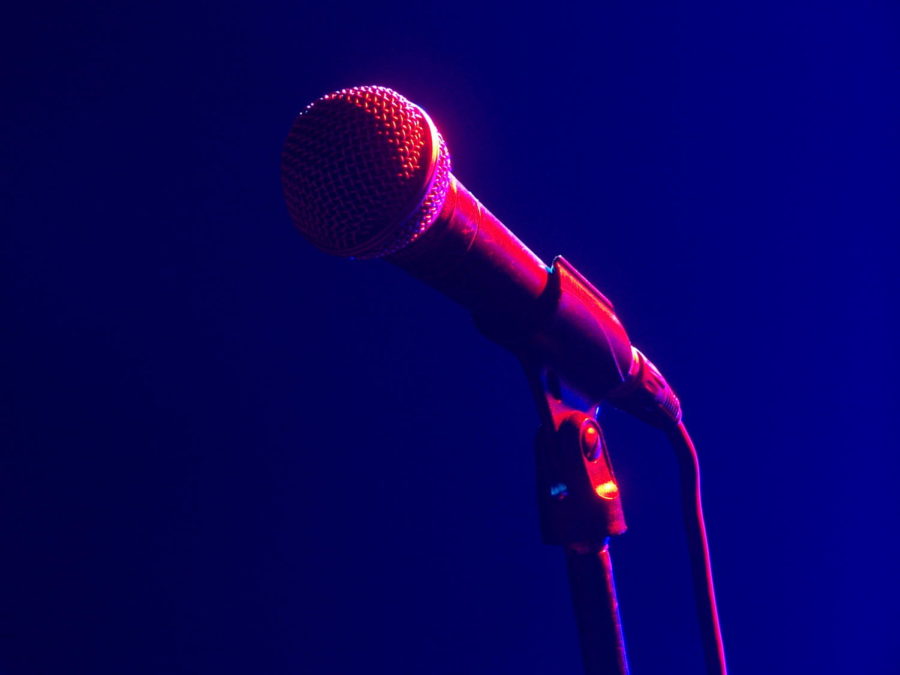Straight Outta Jeddah: Hip-Hop in Saudi Arabia
September 7, 2018
Sounds swipe across the stereo as the ambiance of a busy street plays, as if a cartoon villain is skittling past an innocent videographer. In very little time, a distinctly un-American band begins to play, an eastern air around their brass. The drums have been heavily distorted, sounding like the nightmarish phantom of garage bands past. Yet the cadence of the kick is unmistakable: a rapid-fire section in the second bar and a dragged-out pounding ending the fourth measure of the loop could only be the background for a bullet-proof, ready-to-go rapper.
This song, “Yalla,” by Arabian rapper Qusai, mixes American 90s pop-rap rhymes about overcoming diversity with a beautiful Arabic chorus, as well as almost two fully Arabic verses from the rapper. Smooth keyboards with a tinge of swag complement his lyrics, which are almost politically chosen to be complaint-proof in their request to allow artistic expression, a necessity in a country where one can be jailed for cursing on YouTube. There’s a feeling one gets that Qusai’s cool confidence displays the result of many years of struggling to gain his current mindset and that his inner peace was forged from a raging fire. He
also flexes some of his team’s musical talent in the song’s long outro, featuring chants, singing, and a rapid-fire drum break that rails against the walls of its confinement. There’s a clear mastery of musical style here, with Qusai’s bars fitting perfectly against the foreign backdrop of the instruments and breathtaking chorus.
Not all rap from Arabia is as instrumental or genre-bending as Qusai’s. Female rapper Leesa A, whose celebration of women’s right to drive in Saudi Arabia went viral this summer, has much more in common with Cardi B (whose name is noticeably similar) than Dr. Dre. With a shiny watch on her arm, Leesa whips in and out of a Migos-like triplet flow over a completely distorted beat, throwing in a few familiar dance moves, like an arm roll or the bomb hands, for fun on the way. Even the preemptive reverberating bars are straight from modern American Instagram pages, leading for a song that fits much better on SoundCloud than with Qusai’s take on the art form.
However, just because rap is allowed in Saudi Arabia doesn’t mean it’s truly free. Artists must pay to be registered with the government to perform and obey certain government rules on what they can and cannot discuss, with one government employee telling the Wall Street Journal, regarding these government evaluations, “Unfortunately, some rappers were giving the art a bad reputation.” The government also can still censor artists, with videos disappearing from
YouTube. Luckily, international fans repost them faster than the government can squash them.
So, while hip-hop does now exist in Saudi Arabia and it may have some talented creators in its scene, the government’s absolute control means that it does not enjoy the freedom that its American counterpart does, which ultimately limits artists and serves to dilute and twist the public knowledge. If one looks up Saudi Arabia, one of the first things one will come across is its consistent failure to recognize the rights of women. And while the government can issue badges and only invite performers it considers “safe” to be publicly seen, while it may create a nice collection of songs for itself, it will never come to fully glow as rap does here. The national ambitions fail to recognize and respect the genre’s single rule, as enunciated by one of its greatest, Nas: “In hip-hop, nobody
can tell you you’re wrong unless the rhymes are wack.”

